Join photographer Finn Hopson as he swims from Southwick to Brighton in this mesmerising photo essay, past millionaires’ houses, lugworm fishermen and the mysterious hot water pipe
by Finn Hopson
How many ways can you look at the same thing? How many times can you make the same journey or visit the same place and see something different?
I find myself thinking about this a lot. Since 2014 I have been lucky enough to have a small gallery on Brighton beach, selling my photographs which are inspired by the coastal landscape around me. It is a wonderful place to work, but being in such a well-known part of the world brings the creative challenge of trying to capture familiar places in unfamiliar ways, hoping to surprise people with new ways to see something that they may already know well.
One of the ways I’ve found to meet this challenge is to embark on more and more elaborate and long-winded ways to travel to and from the beach each day via the most interesting or varied routes I can find. I think of this process as connecting the dots. Finding new physical links between places, but also collecting ideas and themes for future work, and occasionally discovering something that sparks a new direction entirely. I’ve lived and worked here most of my life, but there is still a lifetime of things to discover in my own backyard.
With this in mind, I decided to adapt a section of Slow Ways route Soubri One, which connects busy, bustling central Brighton with sleepier, suburban Southwick. It is a journey that manages to go far beyond the quintessential British seaside stroll via a surprisingly diverse and less well-trodden part of the coast. Over three miles it takes in regency splendour, the full length of the promenade, beach huts, mansions, industrial monoliths, a nudist beach, a working harbour and reassuringly regular cafes.
Low tide means a very shallow sea. My first few attempts to start swimming are embarrassingly close to just sitting down in a puddle
To embrace the idea of discovering new perspectives I decided to do the route in both directions. The westerly direction would be on foot, via a section of the official Slow Ways route from the West Pier to the harbour locks at Southwick, but I decided to begin by heading east, getting into the sea early in the morning beneath Shoreham Power Station chimney and swimming along to my gallery on the rising tide. The sea is the unifying element throughout this route, and the people and places encountered along the way are all there to make use of the sea or enjoy it in some way – what better place to begin.
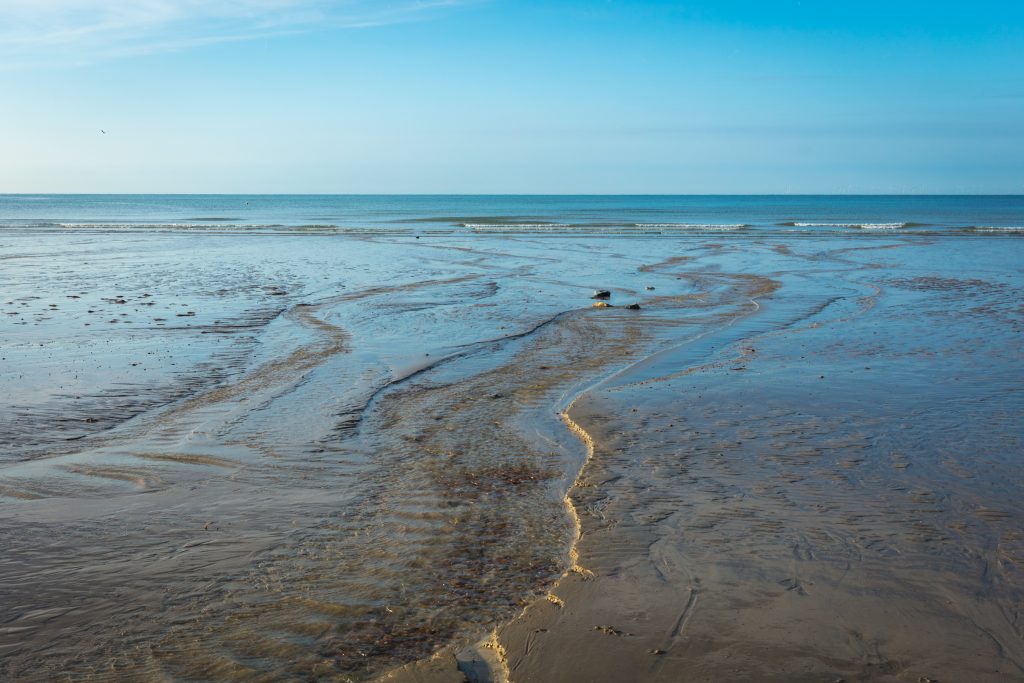
My theory about an incoming spring tide sweeping me along the coast was a good one; the reality was that my swim would begin as a very long wade (a slow wade if you will). Below the steeply banked pebbles is an expanse of flat sand, so low tide means a very shallow sea. My first few attempts to start swimming are embarrassingly close to just sitting down in a puddle.
A tern perched on a buoy looks on in pity. Beyond the buoy I reach waist-deep water and finally float my feet off the ground, intending to not put them down again until I reach the West Pier. I begin, with a bit of kicking, to drift west.
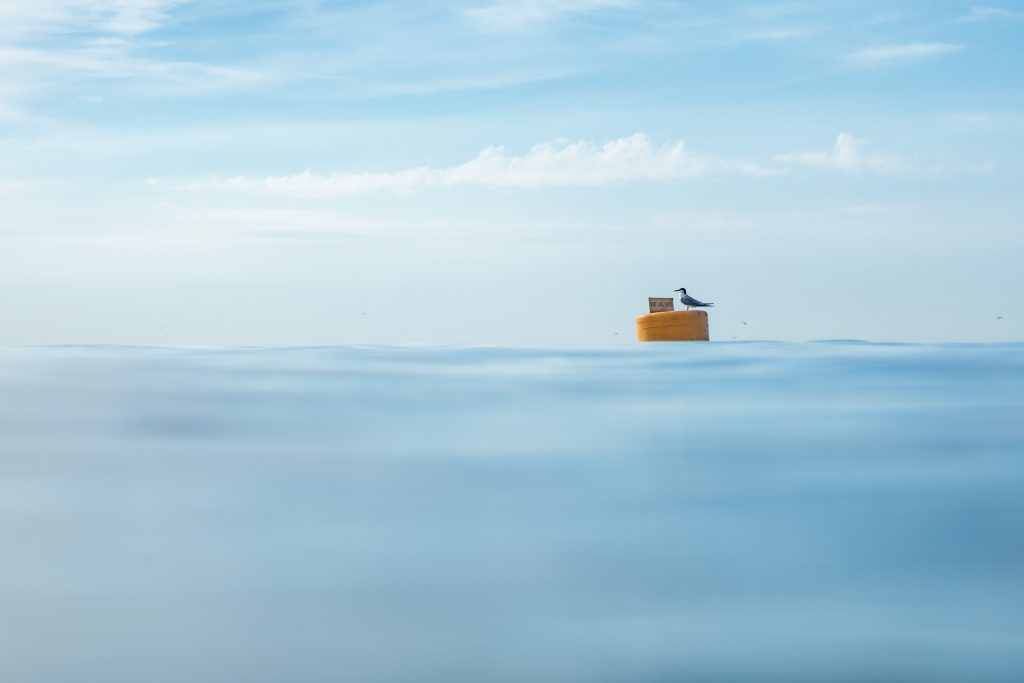
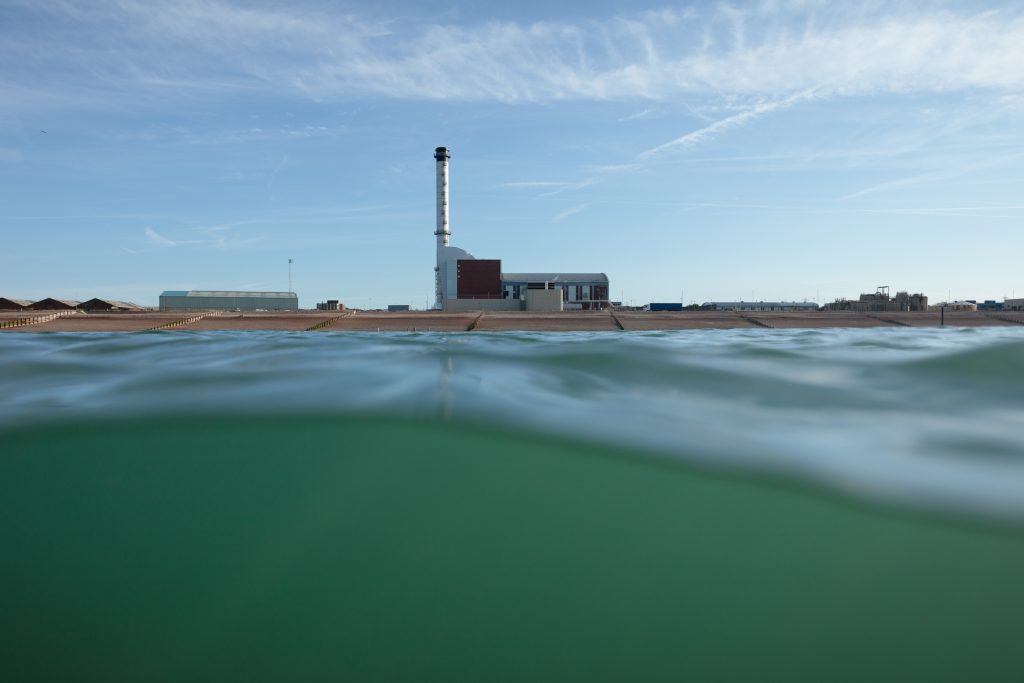
The views for the first one and a half miles of this route are entirely industrial with not a beach hut or a parasol in sight. Wind turbines and warehouses sit behind sections of shingle and sea walls. But despite the rather inhuman appearance of the architecture, there are joggers, dog walkers and metal detectorists on the beach already, each intent on their morning routines.
The Shoreham ‘hot pipe’ actually does pump out hot water and I swim through several minutes of glorious warmth whilst trying not to worry about whether this is entirely safe
I am passed by a couple on paddleboards who ask what I’m doing and are amused by the answer ‘photography’. The highlight of this part of the swim is discovering that the Shoreham ‘hot pipe’ (a well-known local surf spot) actually does pump out hot water and I swim through several minutes of glorious warmth whilst trying not to worry about whether this is entirely safe to swim in. On the far side of the pipe the sound of fishermen sucking lugworms from the sand drifts over the water.
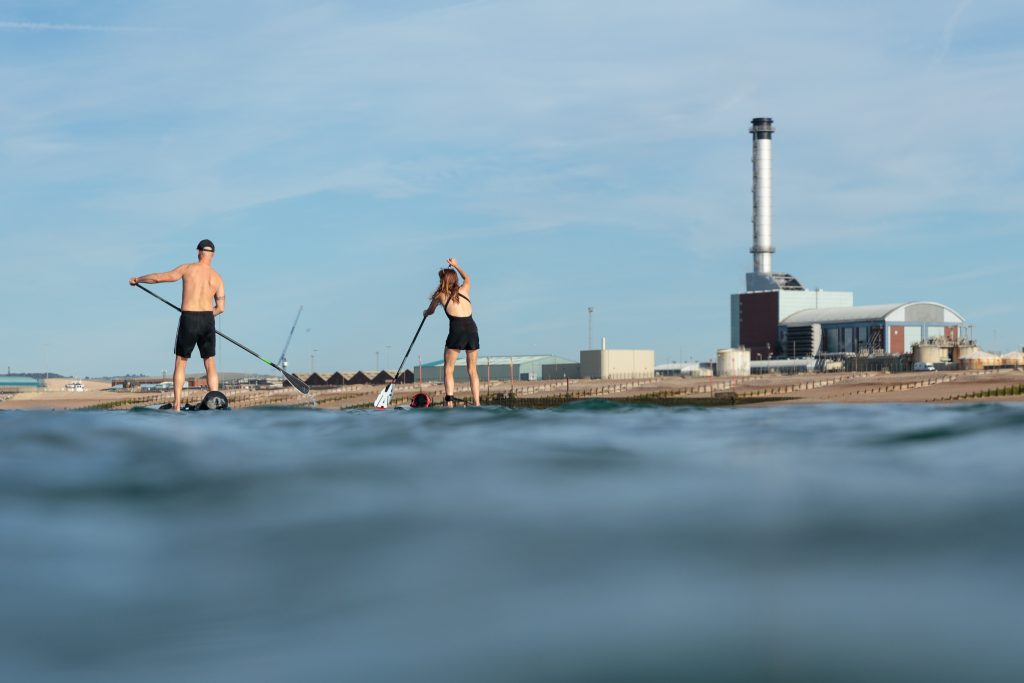
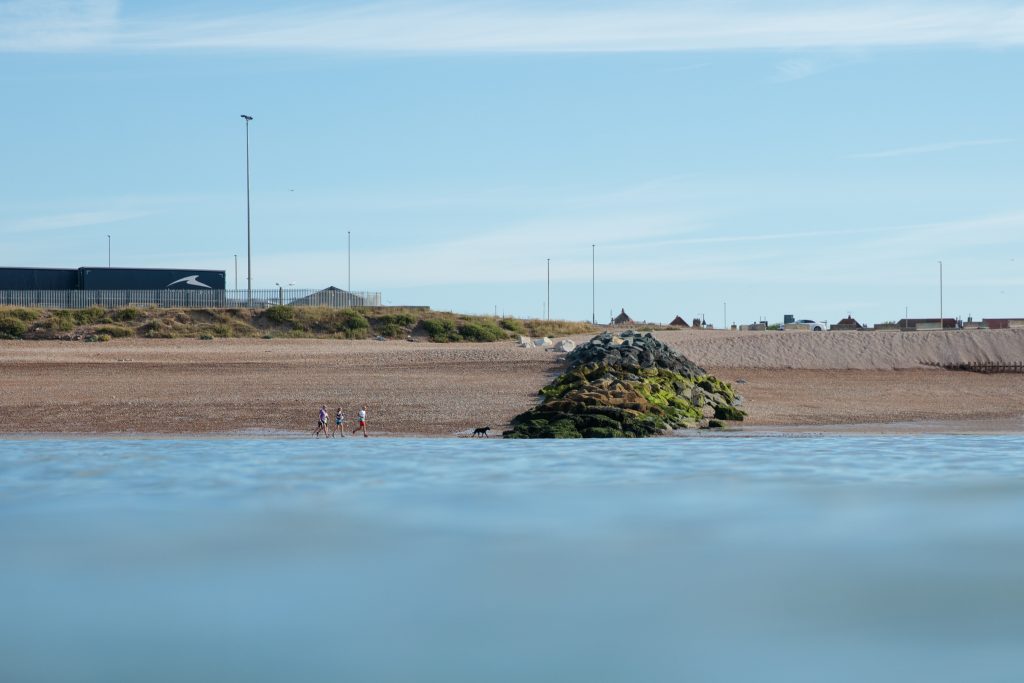
The boundary between port and promenade is passed at ‘Millionaires Row’, an incongruous collection of mini mansions that sit just behind their own private sections of beach. Fatboy Slim is the most famous resident, alongside a host of other well-known names. The low tide means the private beach is temporarily public down on the sand, and dog walkers wander along in front of the houses. The water is still shallow but the tide is picking up and I realise I no longer have to swim to travel west, although I am travelling no faster than 1mph.
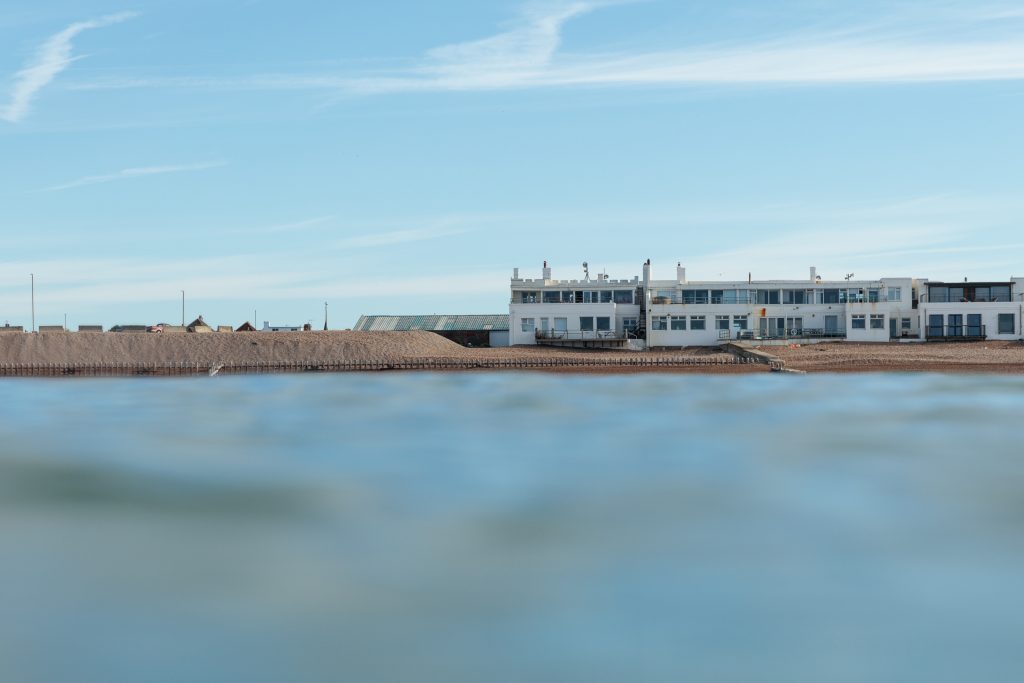
From this point in the journey I will be parallel with Hove promenade. The city is waking up and I see groups of swimmers entering the water with accompanying shrieks and laughter; it’s a joyful sound. Beach huts stud the skyline. Looking out to sea I can see that the alternative Brighton rush hour is underway. A continuous stream of paddleboards head east or west along the horizon. One has a little speaker on it blasting out something energetic; the sound of a bin lorry emptying glass recycling on the prom adds a little percussion. The buildings start to get a little taller and as I look back they appear almost like an island above the waves.
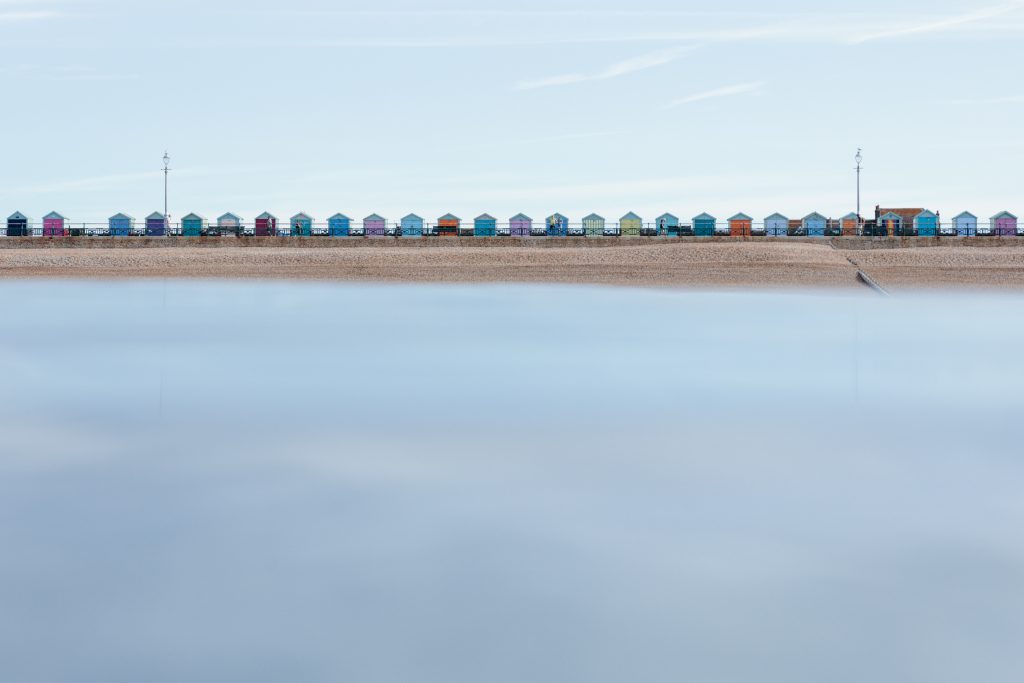
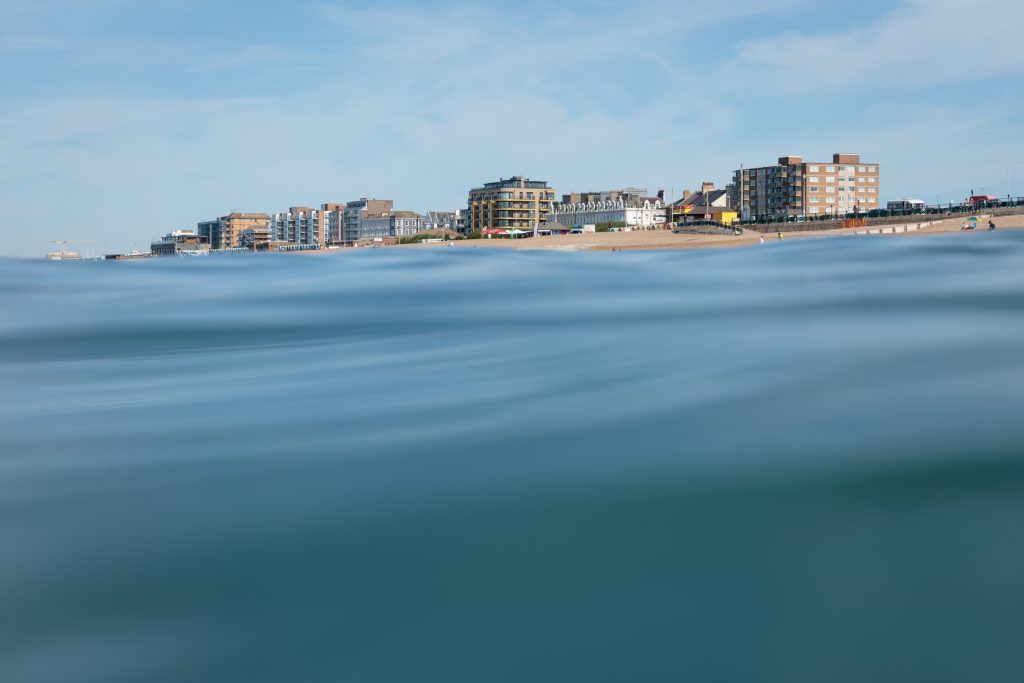
The final stretch of the swim is more familiar to me. Regency terraces, art deco blocks and sixties concrete begin to pile up behind the beach and I can see the end of this leg of the journey. The West Pier, still beautiful in its demise, is my cue to put my feet down and set off back to where I came from.
It has taken me about three hours to cover three miles, the slowest of slow ways. But this preview of the route as seen from the sea has been an excellent reminder of how much variety there is to experience along the way, and that I shouldn’t be in too much of a rush to get back to the start.
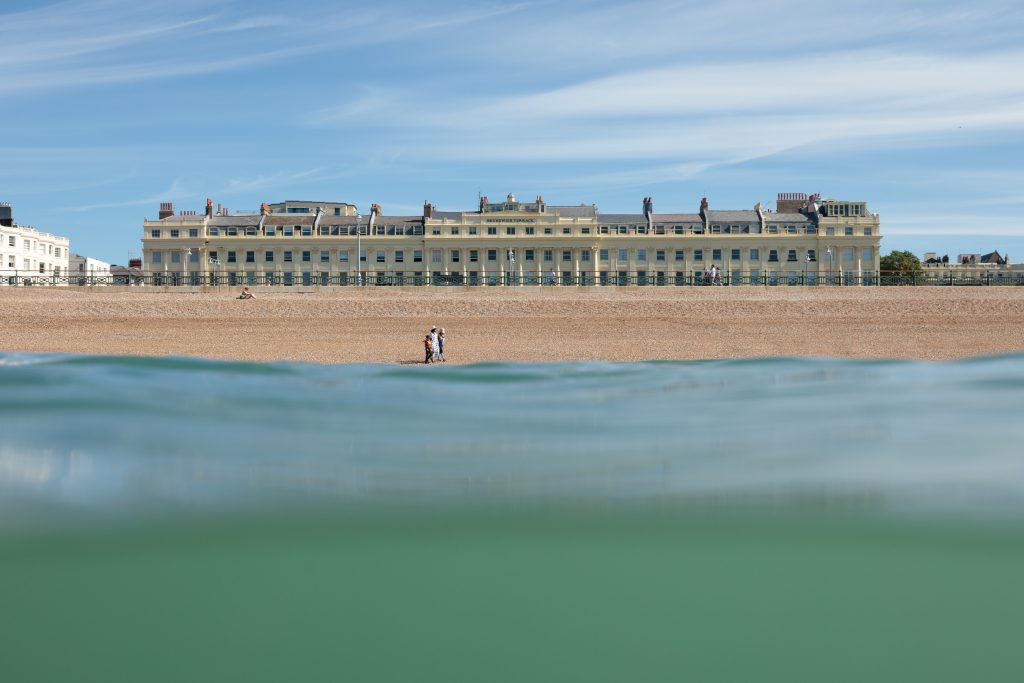
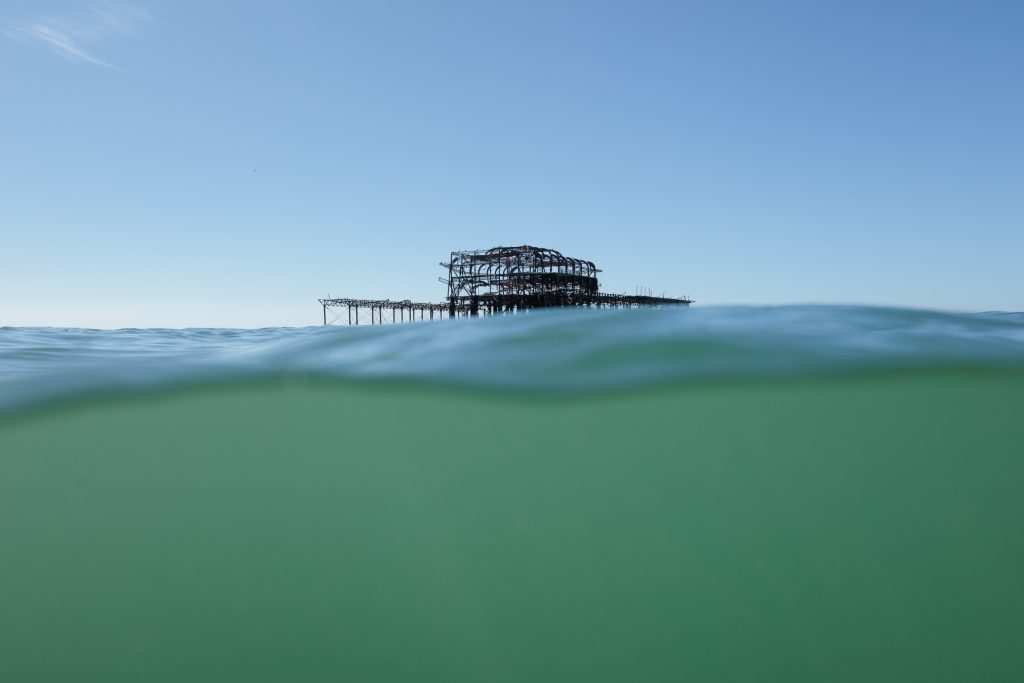
The first part of the return leg can either be along the beach or the promenade. Perhaps one of the most enjoyable times to walk this route would be on a very low tide, missing out the shingle entirely and walking all the way to Southwick on glorious flat sand. Given that the tide is now on the way in, and the pebbles can be fairly hard going, I opt to start on the prom, setting out from the shade of the Upside Down House towards the ornate and beautiful bandstand.
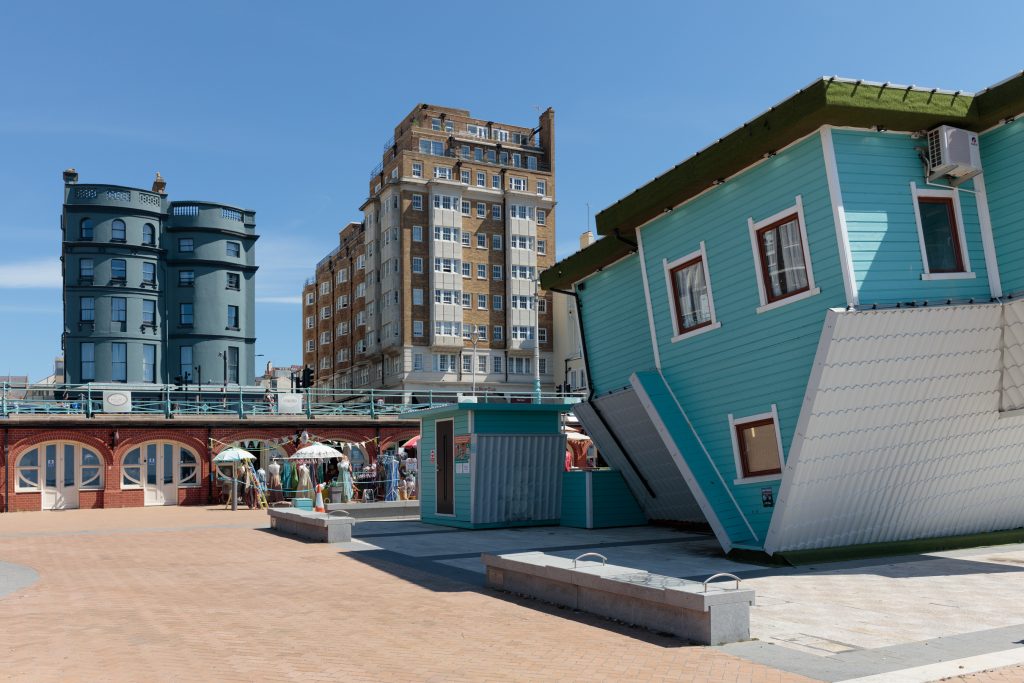
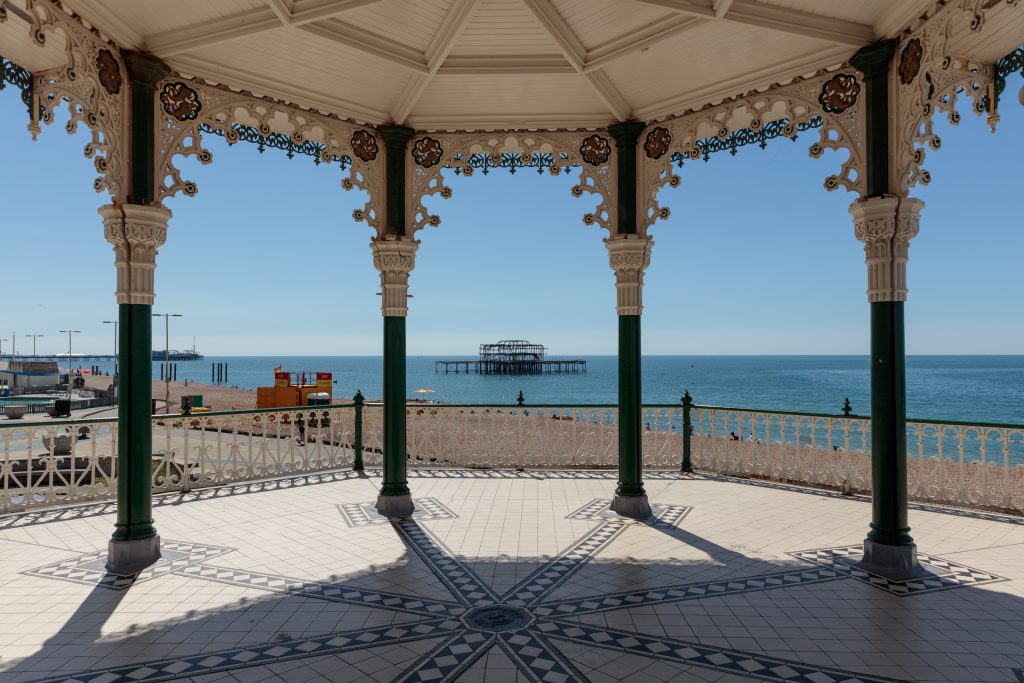
As the prom opens out at the boundary between Brighton and Hove, it’s impossible not to imagine the Victorians taking the sea air in all their finery. Today it all seems a little grubbier and there is something incongruous about such a wide expanse of tarmac right next to the sea, but it makes for easy walking. The view out to sea is matched by the elaborate old buildings behind Hove lawns and the vibrant colours of the beach huts, each one different to the last. There is much fun to be had peeking into any open huts and enjoying the unique ways people set up their little empires for a day in the sunshine.
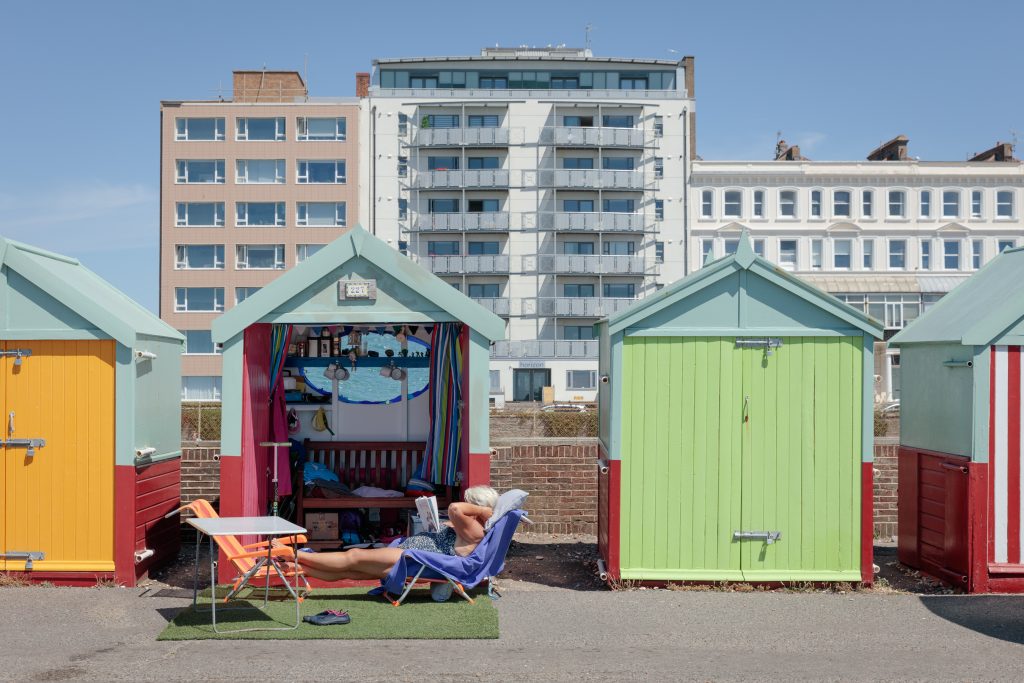
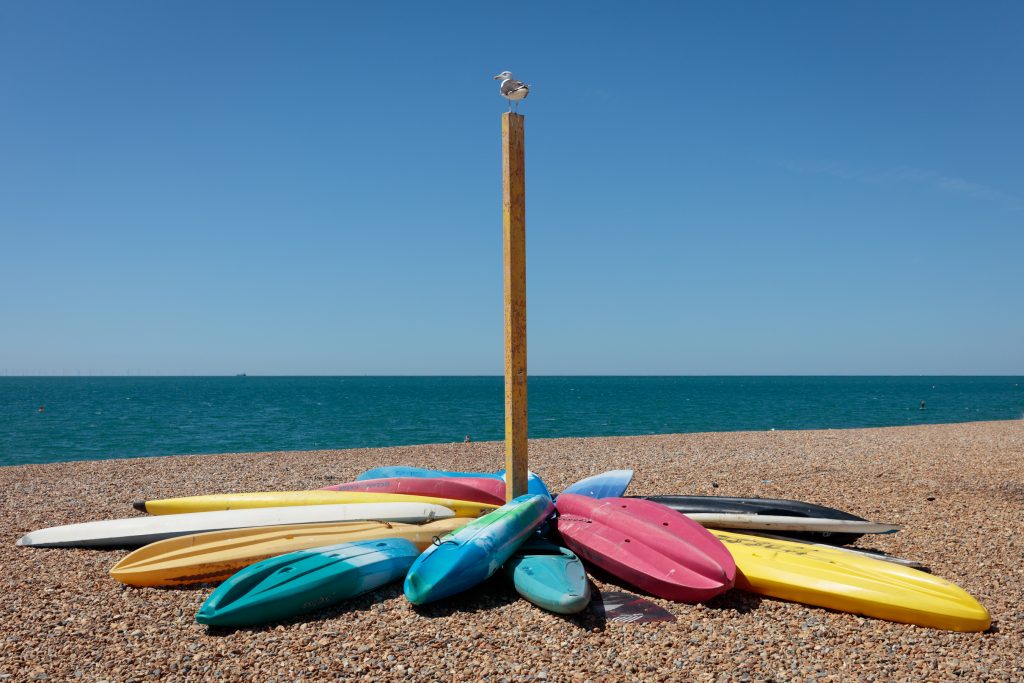
At the end of the widest section of the prom I pass the King Alfred Leisure Centre. It wasn’t a particularly attractive building when I learned to swim there in the 1980s and it hasn’t really improved since. It is oddly fascinating to find something so bleak on such a well-to-do part of Hove beach, surrounded by layers of fencing, roads and a sizeable concrete carpark. Enjoy it while it lasts, this won’t escape developers for much longer.
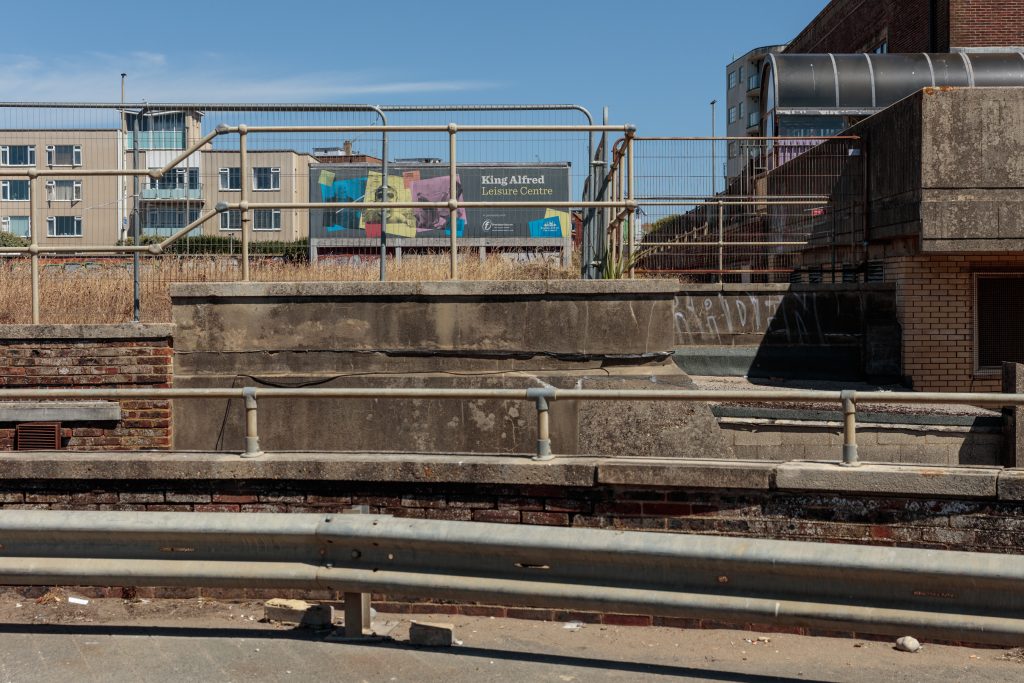
The promenade ends at Hove Lagoon, as does public access to a short stretch of beach. A man sunbathes as close as he possibly can to the Private Beach sign. Being on foot here takes you around to the other side of these houses, and it becomes apparent that luxurious as they are, these homes are located right on top of the access road to Shoreham harbour. It seems a huge difference from one side to the other and I wonder how peaceful it is to live down here.
I find myself on a nudist beach, proof that there is always something new and surprising to be discovered
Following the road eventually takes me back towards the sea, and I decide to walk this section of the route on the beach. Clambering up one of the sea defences I find myself on a nudist beach, proof that there is always something new and surprising to be discovered. I decide against taking any pictures or taking my clothes off on this occasion and re-join the road for a while.
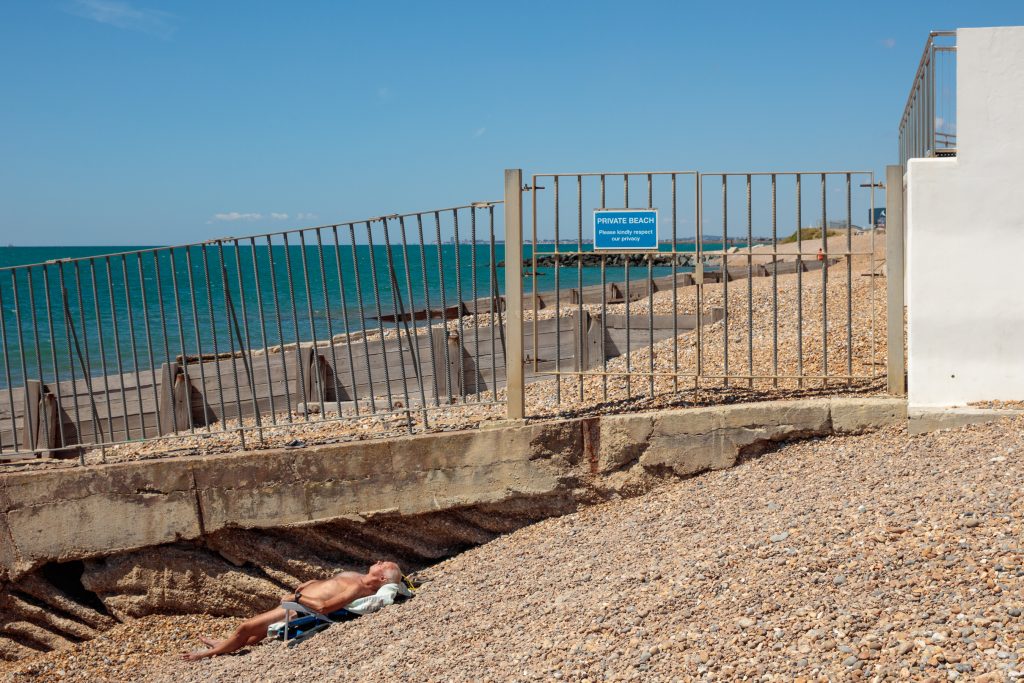
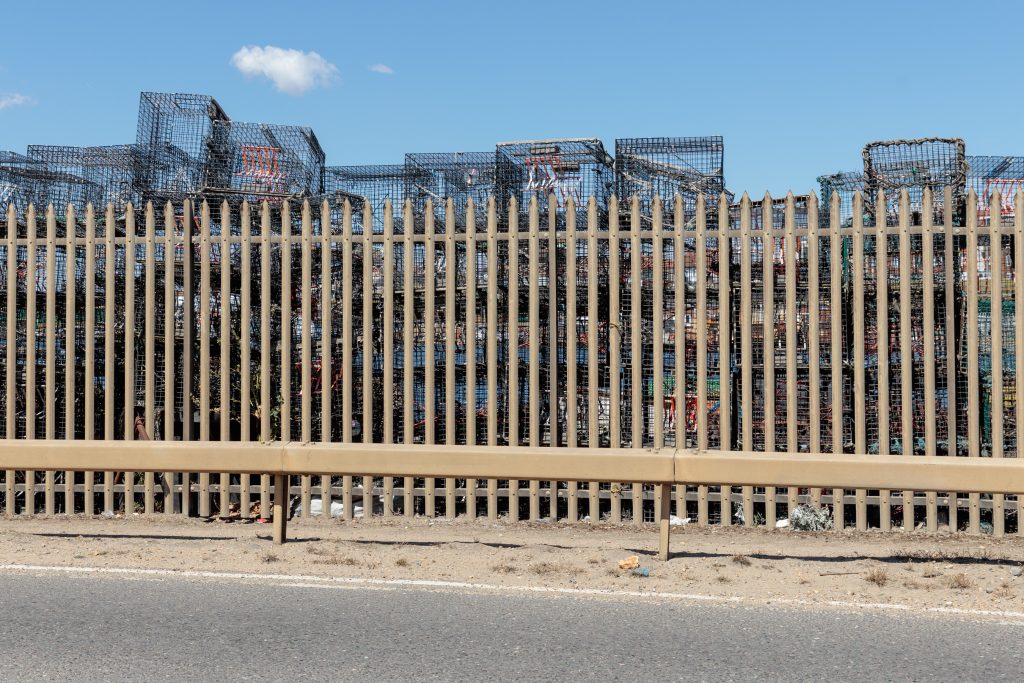
For much of this part of the walk one side of the road is a continuous concrete seawall, the other a mixture of warehouses and dockside access roads. Despite this being a dead-end for motor vehicles, a steady stream of cyclists, joggers and walkers reminds me that there is something worth getting to at the end. The buildings and machinery are brimming with industry and purpose, but I am totally baffled as to what that purpose might be. Occasional zebra crossings encourage me to cross the largely empty road from time to time for a slightly different view of it all. The stripes of sun-bleached colour on the warehouses are faint echoes of the beach huts I’ve left behind.
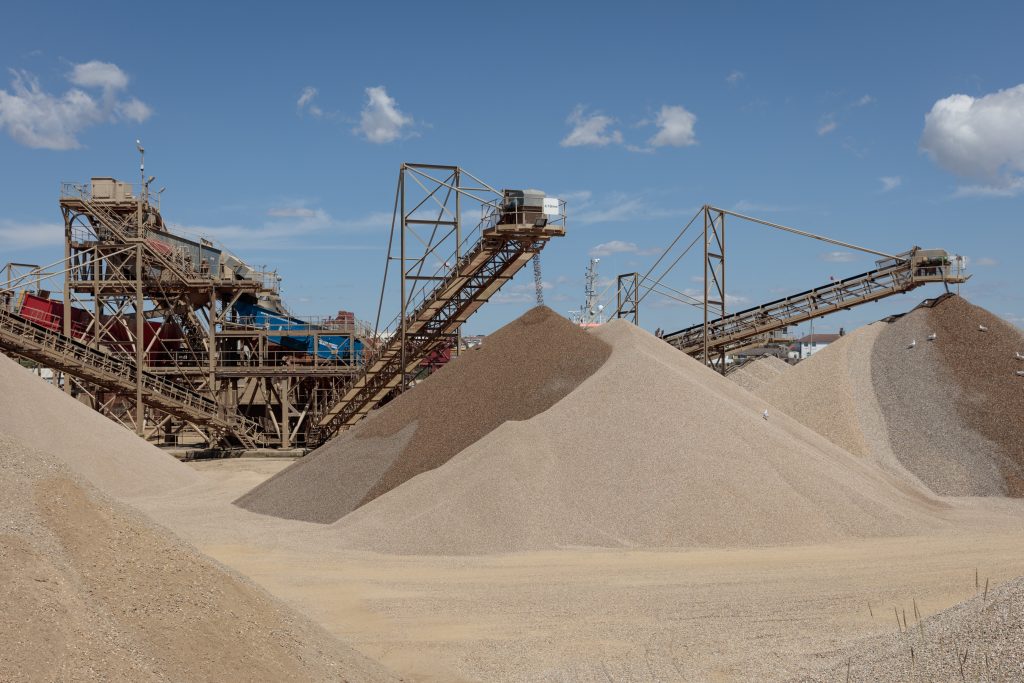
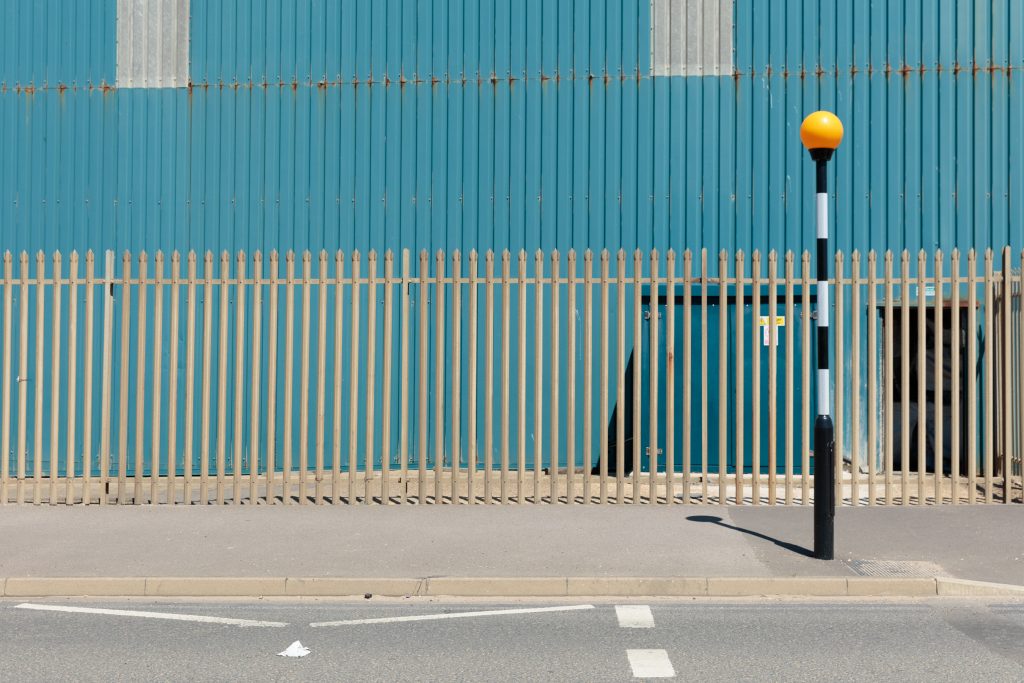
The sea wall ends, and the water comes back into view opposite a sewage treatment plant. The intricate pipes and metalwork are a little reminiscent of the King Alfred, as is the smell. I climb up onto the beach again and on the far side of the wooden sea defences I discover a gallery of driftwood art. There is no indication of who made it or why this is here, but I’m pleased to find a picture of the West Pier to remind me where I have come from.
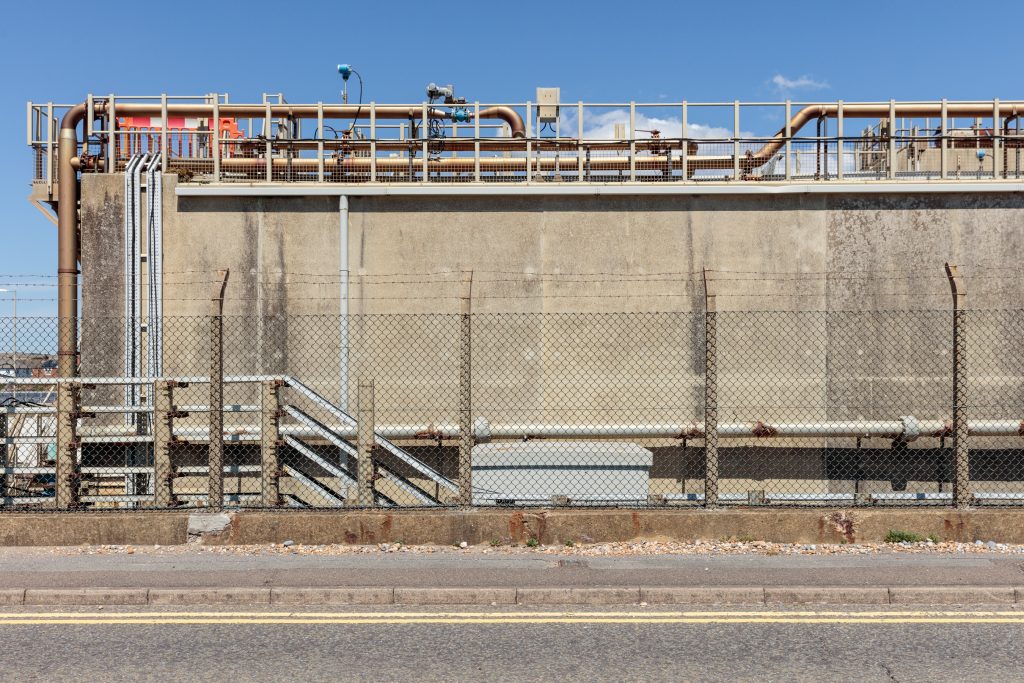
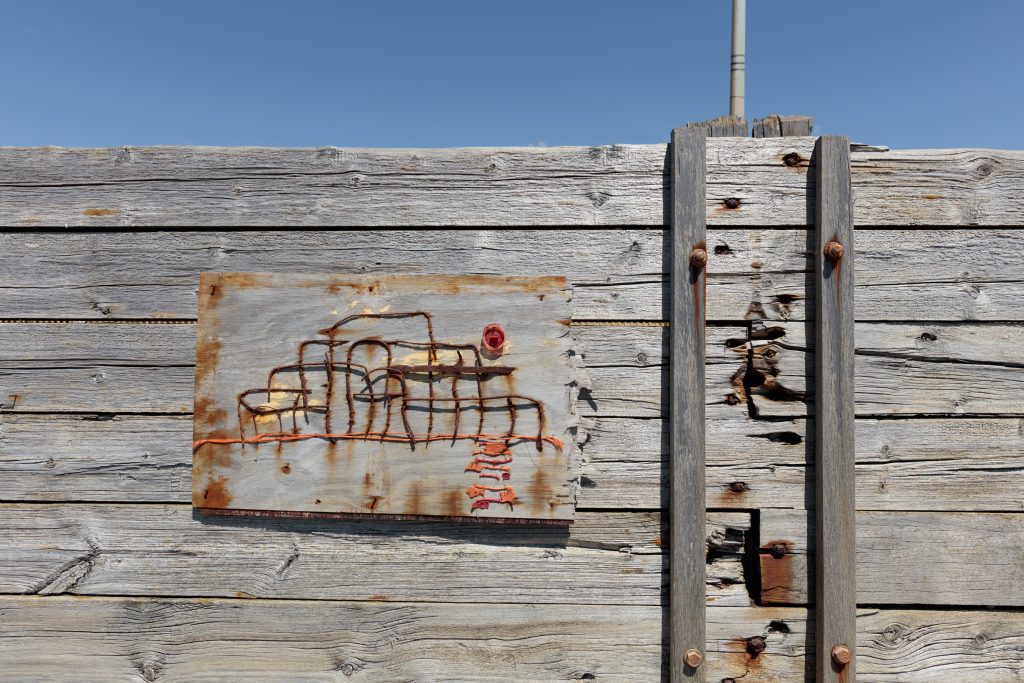
The road, the beach, and my journey end as I reach Shoreham Power Station and Southwick beach. After a quiet mile or so, this is a surprisingly busy spot, a well-kept secret for the locals. Passing by on the busy A259, just the other side of the harbour, there is no clue that this little seaside cul-de-sac exists. I notice a Swimming Only sign on the beach where I began, whilst another signpost indicates that the England Coast Path continues from here, hinting at further exploration another time. On the other side of locks is the new Port Kitchen café where I finish my walk with a coffee and a pain-au-raisin the size of my head.
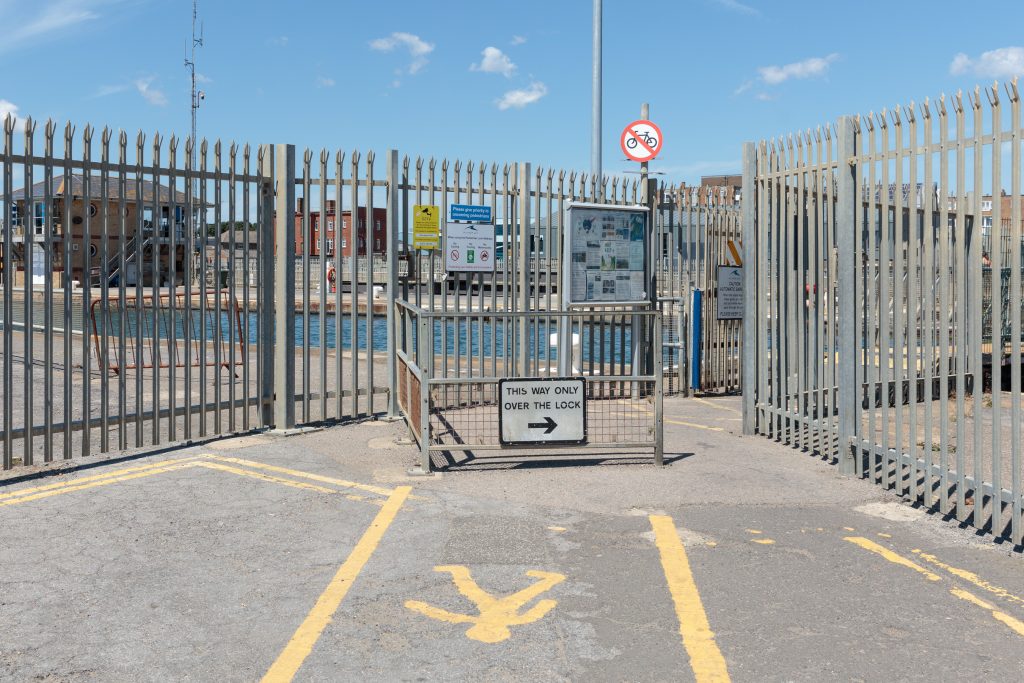
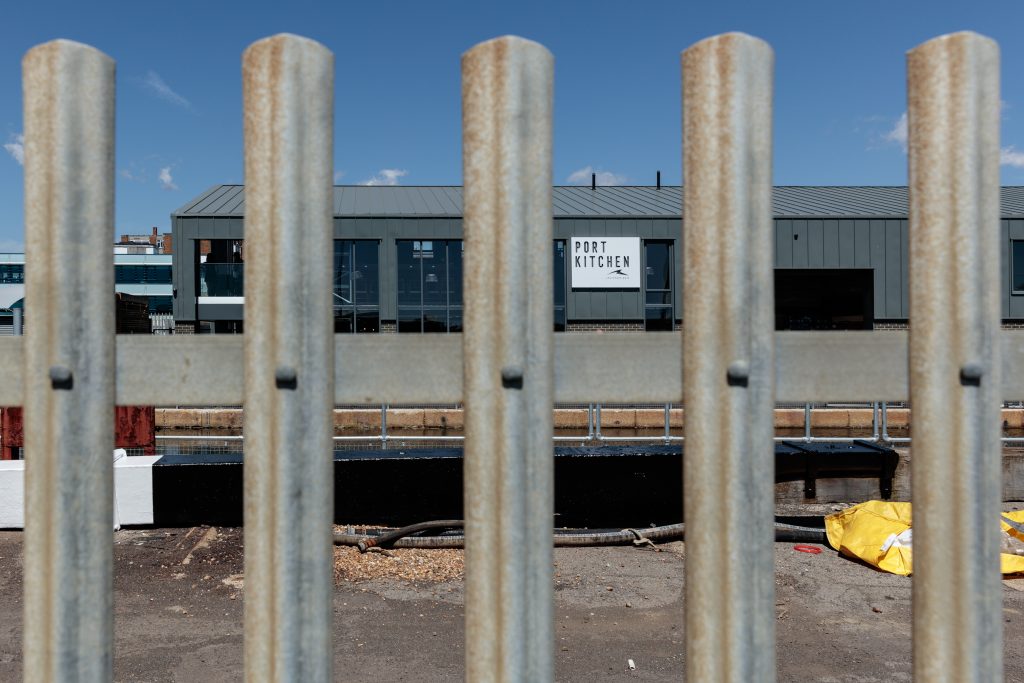
I have been travelling this route one way or another for many years, most often as part of a bike ride or a commute to work. Before today I would have said that I knew it pretty well, but over the course of a few hours of slower travel I have discovered more than I could have imagined and seen a familiar place in a completely new way.
Tantalisingly, I feel I’ve only scratched the surface, and I know I will be back again to explore it in different seasons and weathers. Some dots are joined, the outlines are there, but I need to come back to fill in some details.
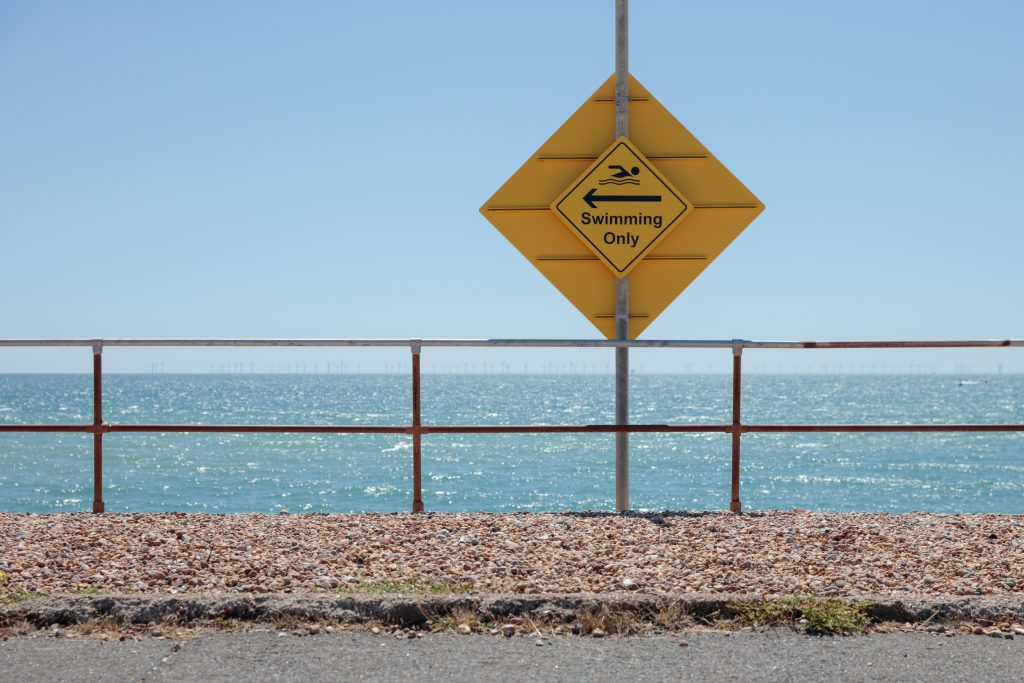
Photos and text: Finn Hopson
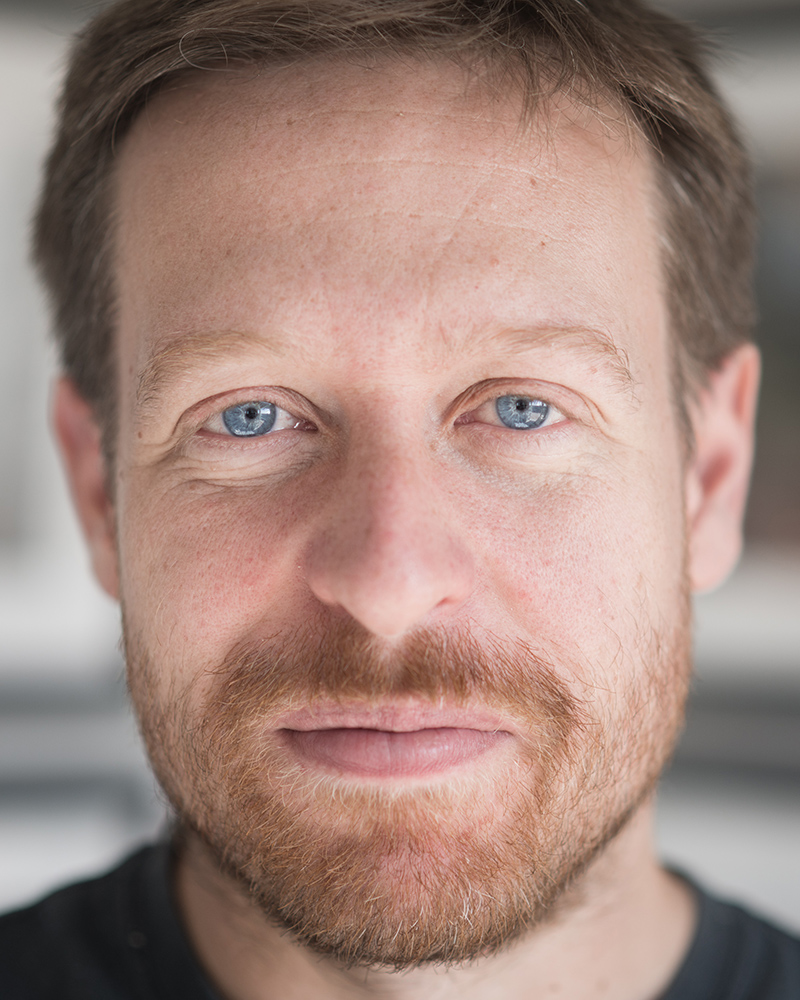
Finn Hopson
Finn Hopson is a photographer from Brighton. Having grown up between the beach and the South Downs, he now spends his time exploring and photographing the places he knows best. In between photography, bike riding and sea swimming, you'll find him at his gallery on Brighton beach.
